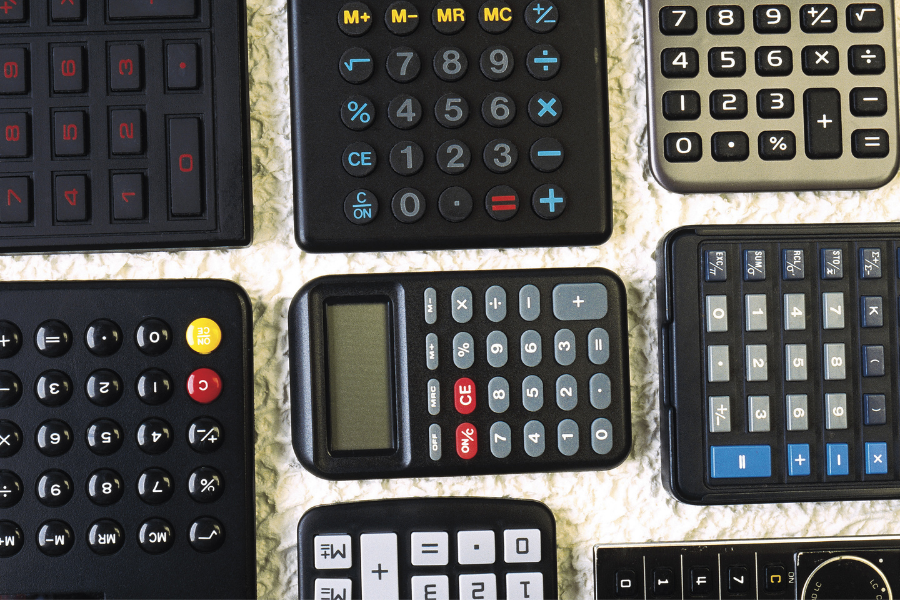Standardized math tests can be intimidating. Fortunately, students are not entirely on their own when it comes to the math sections of the SAT, PSAT, and ACT. Making sure you have the right calculator on test day can boost your score by helping you maximize your time and minimize simple computational mistakes.
Before packing your bag, it’s important to understand the College Board’s and ACT’s calculator policies. Here’s a guide to the types of calculators you’re allowed to use on the ACT, SAT, and PSAT.
SAT & PSAT
Calculators are allowed throughout the SAT and PSAT's two math modules. The Bluebook app on which the exams are administered includes a built-in Desmos calculator with a graphing function. However, students are also allowed to bring their own calculators to the test as well.
Calculators permitted by the College Board must be battery-operated, handheld models. These include:
- Most graphing calculators
- All scientific calculators
- All four-function calculators (not recommended)
Calculators not permitted by the College Board include:
- CAS (computer algebra system) calculators)
- Any calculator in a laptop, tablet, smartphone, smartwatch, etc. other than the Desmos calculator in the Bluebook app.
- Calculators that require a power cord. Only battery-operated, handheld equipment can be used for testing.
Check out a complete list of College Board-approved calculators here. Other t
ACT
Students can use a calculator on the entirety of the math section of the ACT. Any 4-function, scientific, or graphing calculator is permitted as long as it is not on the prohibited list.
Here are the calculators that are not permitted:
- Calculators with built-in or downloaded computer algebra system functionality, including:
- All model numbers that begin with TI-89 or TI-92
- TI-Nspire CAS (the non-CAS TI-Nspire is permitted)
- HP Prime
- HP 48GII
- All model numbers that begin with HP 40G, HP 49G, or HP 50G
- fx-CP400 (ClassPad 400)
- ClassPad 300 or ClassPad 330
- Algebra fx 2.0
- All model numbers that begin with CFX-9970G
- Texas Instruments:
- Hewlett-Packard:
- Casio:
- Calculators that have a computer-style (QWERTY) keypad or stylus
- Any laptops, tablets, smartphones, smartwatches, etc.
Check out ACT’s full policy here.
Note that on the ACT, SAT, and PSAT, you may be seated at the proctor’s discretion if you are using a calculator with larger characters (one inch or higher) or a raised display that might otherwise be visible to other students in the room.
Tips for test day
Keep the following tips in mind:
- Practice using your calculator well in advance. The best calculator is not necessarily the flashiest model—it's more important that you feel comfortable with the calculator you're going to use on test day.
- Make sure your calculator is charged or has fresh batteries so that it works properly during the exam.
- If possible, bring a backup. On the off chance that you do run into calculator issues on test day, it's helpful to have another option (even if it's a more basic model).
- If you're taking the SAT, be sure to try out the powerful built-in Desmos calculator. Even if you have a personal calculator that you know well and love, you may find that some problems can be solved more easily and quickly in Desmos.
Need more individualized advice?
The recommendations above are general suggestions. If you have specific questions, reach out to our experts here. We’re happy to help in any way we can.
About ArborBridge
ArborBridge is the global leader in innovative, digital, one-on-one tutoring. With nearly a decade of experience teaching students online, ArborBridge supports students of all kinds: home schoolers, AP students, test preppers, and more. Our tutors specialize in creating personalized plans and in providing compassionate support for students and families.







